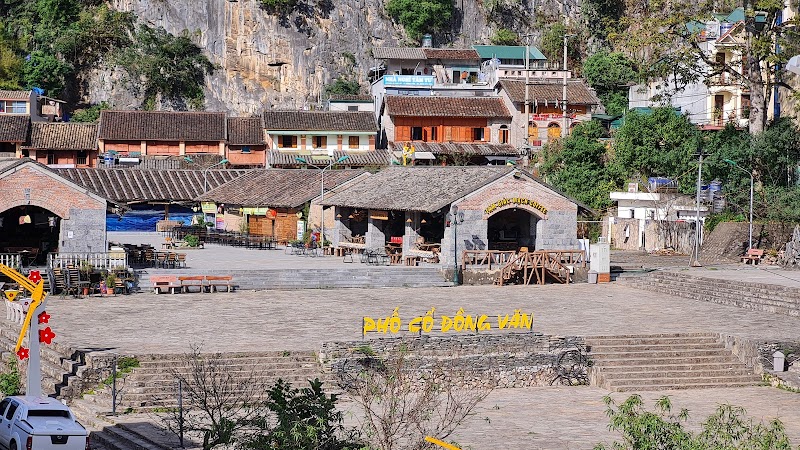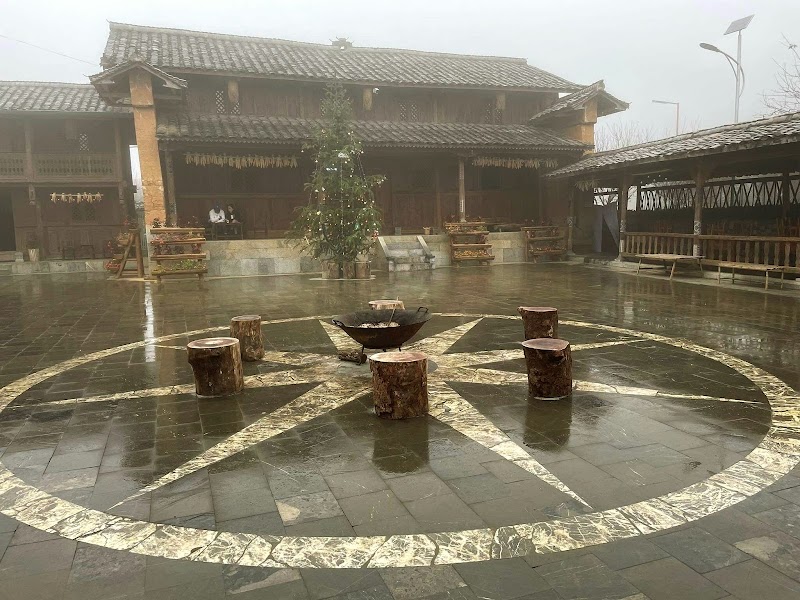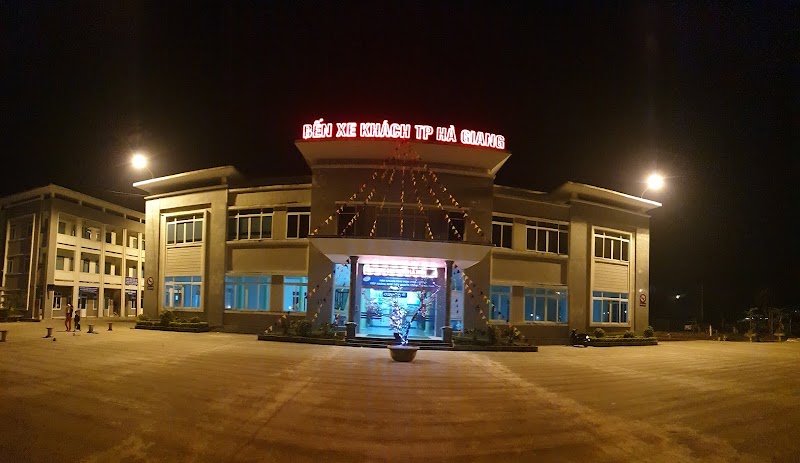Welcome to Ha Giang Loop, Vietnam
Unfolding the untold splendors of Southeast Asia is the Ha Giang Loop in Vietnam, spanning over 185 miles of picturesque landscapes. This majestic motorcycle route showcases towering limestone peaks, lush rice terraces, and traditional hill-tribe villages. It's more than a journey; it's an immersion into the vibrant mosaic of Vietnamese culture and natural beauty, with key attractions like the Quan Ba Heaven's Gate and the Dong Van Karst Plateau Geopark.
To ensure a seamless voyage, we highly recommend using a tourist map of Ha Giang Loop. This invaluable tool will be your guide through the snaking roads and hidden jewels of the Ha Giang Loop. With it, you can plan your itinerary, ensure you don't skip any notable sights, and truly immerse yourself in this remarkable adventure. So gear up to traverse the Ha Giang Loop, an expedition promising a multitude of unparalleled experiences and awe-inspiring vistas.
Booking.comUncover the Hidden Gems of Ha Giang Loop, Vietnam
The Ha Giang Loop is like an endless treasure trove of discoveries. Each bend on this mesmerizing path reveals a fresh spectacle of stunning beauty and cultural relevance. From the captivating architecture of H'Mong King's Palace to the otherworldly charm of Lung Cu Flag Tower, there's a universe of experiences to uncover.
Immerse Yourself in the Quiet Charm of Lung Tam Village
Nestled in the core of the Ha Giang Loop, Lung Tam Village is an absolute must-visit. This tranquil hamlet offers a glimpse into the age-old process of traditional hemp weaving, a craft that has withstood the passage of time. The village is also the dwelling of the H'Mong community, whose warmth and hospitality will make your visit truly memorable. Don't leave without buying a stunningly crafted textile piece as a keepsake.
Revel in the Majestic Views at Ma Pi Leng Pass
Ma Pi Leng Pass, one of the loop's breathtaking hotspots, promises a vision that will forever be etched in your memory. Perched at a height of 1,200 meters, it provides panoramic views of the surrounding karst peaks and the emerald Nho Que River. What's most enticing about the pass is that it leads you to the bustling town of Meo Vac, known for its lively Sunday market where local tribes gather to sell their produce and handicrafts. You might also like to explore our Ninh Binh tourist map for more Vietnamese adventures.
Step into the Historical Extravagance of H'Mong King's Palace
Travel back in time as you step into the H'Mong King's Palace, a living testament to the rich history of the H'Mong people. Built in the early 20th century, this palace captivates with its unique fusion of Chinese architecture and H'Mong building techniques. The palace's grandeur is a sight to behold, but the tales of the H'Mong King's reign add an intriguing layer to your visit.
Ascend to Vietnam's Northernmost Point at Lung Cu Flag Tower
No visit to the Ha Giang Loop is complete without ascending the Lung Cu Flag Tower. This tower, majestically standing at Vietnam's northernmost point, towers over verdant rice fields and offers unmatched views of the surrounding landscape. The sight of the tower's flag waving high against the clear blue sky instills a sense of achievement.
Witness the Geological Wonder of Fairy Bosom
Finally, ensure to stop by the Fairy Bosom, a geological marvel that's a feast for the eyes. These twin mountains, reminiscent of a woman's bosom, symbolize fertility and are revered by the locals. As you marvel at this spectacle, take a moment to look at the tourist map of Vietnam to appreciate the breadth of attractions you've traversed in this enchanting loop.
In conclusion, the Ha Giang Loop offers not just a passage through mesmerizing landscapes, but also a rich cultural experience. From the breathtaking peaks of Ma Pi Leng Pass to the serene beauty of Lung Tam Village, each destination holds a tale waiting to be unveiled. You might also want to check out our Ha Giang tourist map for a comprehensive guide to this beautiful region.

Practical Information for Navigating the Ha Giang Loop
Transportation and Mobility
To explore the Ha Giang Loop, the most preferred mode of transport is renting a motorcycle. In Ha Giang city, you can easily rent a bike for around 200,000 to 250,000 VND per day. Alternatively, you may hire a car or choose a guided tour package that includes transportation, accommodation, and meals. The Ha Giang bus station is well-connected, with frequent bus services from Hanoi taking around 6-8 hours. For a more comfortable journey, consider booking a sleeper bus.
Schedules and Prices
The majority of the attractions along the Ha Giang Loop welcome visitors from early morning till dusk, generally around 6:00 AM to 6:00 PM. Entrance fees for the major attractions are priced between 10,000 to 30,000 VND. Starting your journey early in the morning is recommended to maximize daylight and dodge the crowds.
Safety Guidelines
Always wear a helmet when riding a motorcycle and ensure your vehicle is in good condition before embarking on your journey. The roads in Ha Giang can be risky, particularly during the rainy season. Keeping an eye on the weather forecast and avoiding riding in adverse conditions is paramount. Do remember to pack a first aid kit, sunscreen, and insect repellent as you'll be spending much time outdoors.
Practical Recommendations
The ideal time to visit the Ha Giang Loop is from September to November, when the weather is generally clear and the landscape is vibrant with fall colors. This is also the harvest season, offering stunning views of golden rice terraces. However, bear in mind that this is also the peak tourist season, and pre-booking your accommodations is advisable. Always keep cash handy as ATMs are limited in the rural areas and many places do not accept credit cards.

Frequently Asked Questions
1. Can I travel the Ha Giang Loop if I don't know how to ride a motorcycle?
Absolutely, there are other options if you're not comfortable with motorbikes. You could hire a car and driver for the journey. There are also guided tours that use minibuses or cars. Remember, safety is paramount, so choose the mode of transport that fits your abilities and comfort level.
2. Is there any specific local etiquette I should be aware of when interacting with the H'mong community?
Respecting local customs is vital for a harmonious travel experience. When visiting the H'mong community, it's important to ask for permission before taking photos. Touching their traditional headgear or other elements of their outfit is considered disrespectful. Always remember, you are a guest in their homeland and culture.
3. Do I need any special permits to travel the Ha Giang Loop?
Yes, you'll need to obtain a permit to travel in the border areas, including the Ha Giang Loop. You can get this permit at the Ha Giang Immigration Office. It's a straightforward process, and the fee is typically around 230,000 VND.
4. Are there any recommended stops for food along the Ha Giang Loop?
Indeed, there are numerous opportunities to savor local cuisines along the loop. Towns like Yen Minh and Dong Van offer a multitude of eateries where you can indulge in traditional Vietnamese dishes. Trying the local Pho or Banh Mi sandwiches is a must-do!
5. What kind of wildlife can I expect to see on the Ha Giang Loop?
While the loop is renowned for its stunning landscapes, it's also home to a diverse wildlife. Stay alert for various species of birds, butterflies, and potentially larger mammals like monkeys. However, remember to observe from a distance and do not disturb the wildlife.
6. Is there any local souvenir I can bring back from the Ha Giang Loop?
Yes, the region is rich in unique handicrafts. Local markets in Dong Van and Meo Vac sell traditional H'mong textiles, beautifully embroidered clothing, and silver jewelry. These not only make great mementos but also support the local economy.

